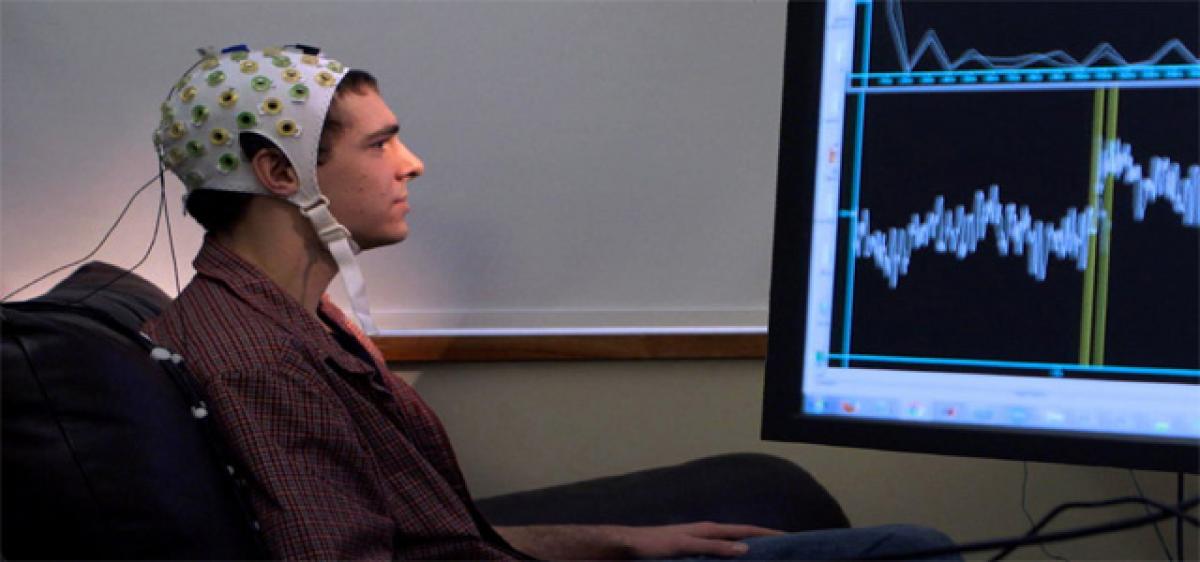Live
- Uphold prestige of Assembly: Pawan
- Children are nation's future, says Revanth
- SC junks plea to ban WhatsApp
- RRR elected Assembly Dy Speaker unopposed
- Cong wants separate Constitution in J&K
- Modi never read Constitution, hence it is blank for him: Rahul
- AP: Global destination
- Tulsi Gabbard on National Intel
- Tribal women from Lagacharla seek KTR’s support
- India vs Malaysia FIFA Friendly Match Poster Unveiled by CM
Just In

US researchers have developed a new mind-controlled device that reads brain signals, converts them into motion and thus helps stroke patients to retrain their brains to move their paralysed hands.
US researchers have developed a new mind-controlled device that reads brain signals, converts them into motion and thus helps stroke patients to retrain their brains to move their paralysed hands. The study showed that stroke patients who learned to use their minds to open and close the device fitted over their paralysed hands gained some control over their hands, said Eric Leuthardt, Professor at Washington University in St. Louis.
The device Ipsihand comprises a cap that contains electrodes to detect electrical signals in the brain, a computer that amplifies the signals, and a movable brace that fits over the paralysed hand. The device detects the wearer's intention to open or close the paralysed hand, and moves the hand in a pincer-like grip, with the second and third fingers bending to meet the thumb.
Controlling an object or a video game with your mind sounds like something out of a science fiction movie, but gadgets that translate brain waves into commands that control a computer are already a reality. In 2014, MIT’s Technology Review reported on a study in which a paralyzed woman used her mind to control a robotic arm. Scientists built better and better decoders software to interpret neuronal signals over the years, which has enabled them to experiment with more ambitious control schemes, according to cheatsheet.com.
The history of brain–computer interfaces (BCIs) starts with Hans Berger's discovery of the electrical activity of the human brain and the development of electroencephalography (EEG). In 1924 Berger was the first to record human brain activity by means of EEG. Berger was able to identify oscillatory activity, such as Berger's wave or the alpha wave (8–13 Hz), by analyzing EEG traces.
Neuroprosthetics is an area of neuroscience concerned with neural prostheses, that is, using artificial devices to replace the function of impaired nervous systems and brain related problems, or of sensory organs. The terms are sometimes, however, used interchangeably. Neuroprosthetics and BCIs seek to achieve the same aims, such as restoring sight, hearing, movement, ability to communicate, and even cognitive function. Both use similar experimental methods and surgical techniques.

© 2024 Hyderabad Media House Limited/The Hans India. All rights reserved. Powered by hocalwire.com







